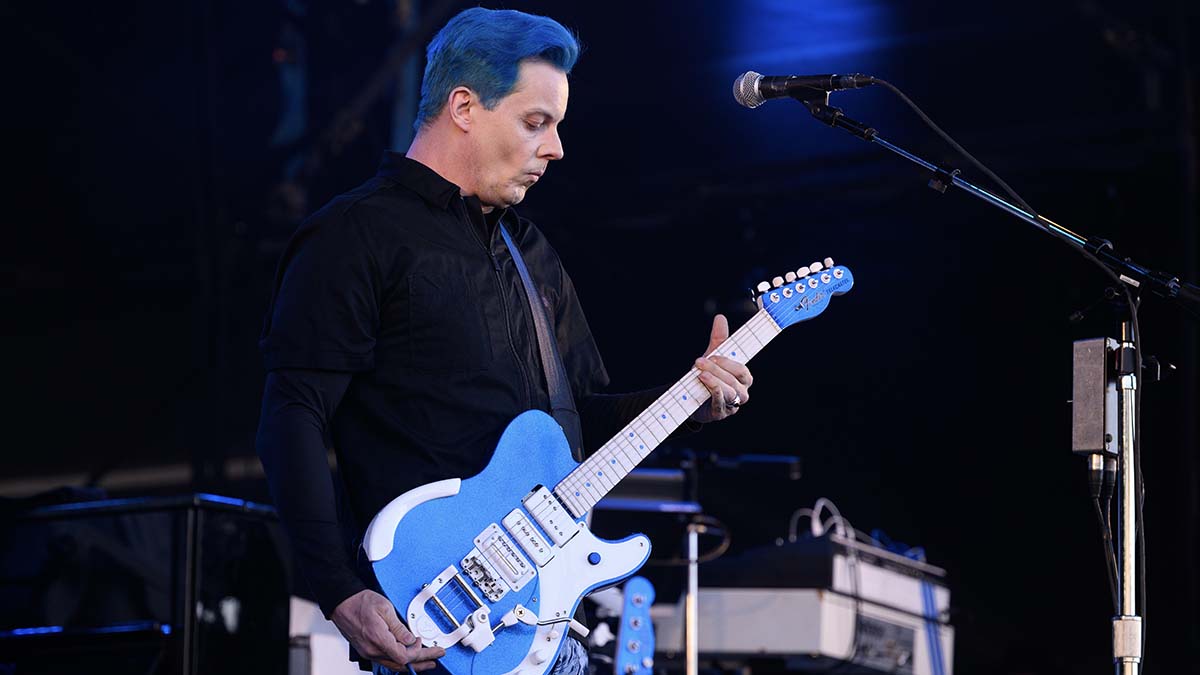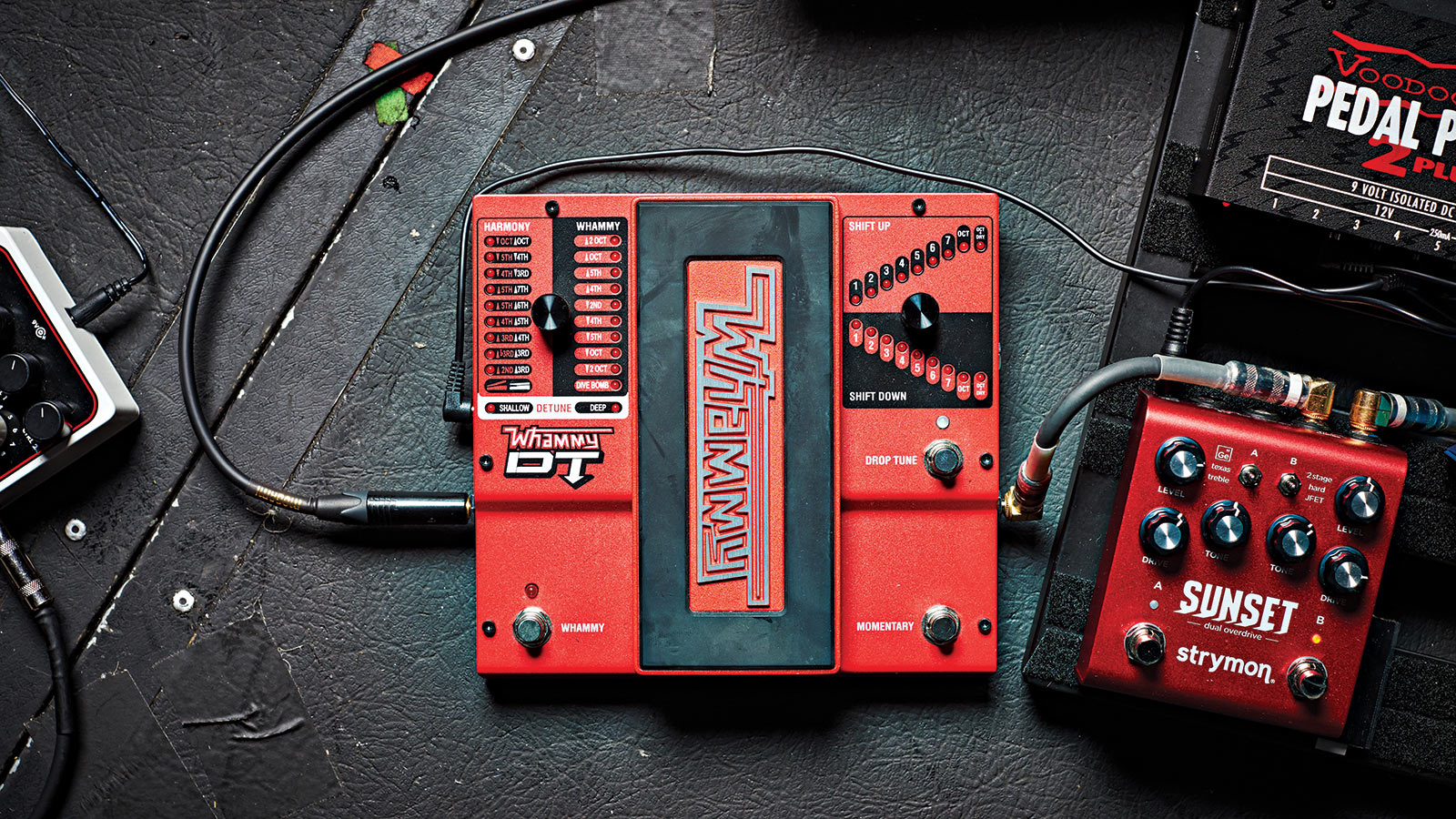6 guitar tricks you can learn from Jack White
We look at some techniques and tonal tricks to help you nail White's unique style and sound, with a half-dozen tabbed examples to get you started

Play like Jack White... That’s easy, right? Well, in some respects perhaps, yes. The open chords and basic strumming in The White Stripes’ Dead Leaves And The Dirty Ground, for example, are achievable for all but absolute beginners.
Jack spread his guitar-playing wings with Brendan Benson in The Raconteurs, and his epic Jimmy Page-inspired solos in live shows are something to behold. But it’s since 2012’s solo debut, Blunderbuss, that his musical eccentricity and broad range of influences have truly shone through.
Still, there are consistent threads in his playing throughout his entire career – and his tone is at the heart of it. Get a ballpark White-esque tone and you’ll find it easier to get a feel for his playing. Fuzz-driven, octave- and powerchord-based riffs figure highly, alongside ear-catching pentatonic and Whammy pedal-infused solos.
Check out our ‘Play Like Jack’ tab examples complete with playing tips and tonal advice below.
Essential gear tips for Jack White tone

Jack has experimented with various pedals over the years, but these three pedals should form the core of any tribute rig.
1. Electro-Harmonix Big Muff PI
Wind up the distortion on this classic fuzz pedal. You’re aiming for maximum compression.
2. Electro-Harmonix POG
Used for both octave-up and octave-down sounds, it’s an essential effect to have in your arsenal.
3. Digitech Whammy
Don’t own one? Any expression pedal-equipped digital multi-effects floorboard will have a similar option.
Fig 1. Medium fuzz and octaver

This riff is based in the E minor pentatonic scale in open position – though it’s the kind of riff you can transpose to any octave and fret position. Inspired by The White Stripes’ Icky Thump we’re using a medium fuzz distortion and an octaver to round out the bottom end.
Fig. 2 Powerchord arpeggios

Taking our inspiration from The Hardest Button To Button, here we’re looking at a simple idea: turning powerchords into arpeggios. If you have a looper and Whammy-style pitch shifter pedal you could experiment by laying down a bassline underneath these shapes.
Fig. 3 Whammy pedal solo

Soloing with DigiTech’s Whammy pedal is Jack’s stock in trade. And, though the resultant lead breaks can sound whacky, Jack’s note choice is often simple bluesy pentatonics. We’ve indicated in the tab where to employ your Whammy. Just remember to set it to an octave above your guitar signal.
Fig. 4 Bluesy staccato phrasing

2014’s Lazaretto is our inspiration here, where you’ll find a mix of rapid-fire phrases and short, quick notes in a bluesy G minor solo. We’ve employed an octaver here. Unlike a Whammy effect, this is an always on pitch shifter used primarily to thicken the sound.
Fig. 5 Powerchord bends

Play the D5 powerchord with first and third fingers here, and pull down a quarter of a tone evenly on the strings as you strum with a downstroke. It’s a technique Jack applied in The White Stripes’ Black Math.
Fig. 6 Stutter picked/killswitched lick

Traditionally, Jack created killswitch-style riffs using rapid-fire up-picking and fret-hand muting, known by some as stutter picking. Typically he’ll use loads of fuzz.
Get The Pick Newsletter
All the latest guitar news, interviews, lessons, reviews, deals and more, direct to your inbox!
Charlie Griffiths plays guitar in acclaimed prog-metal outfit Haken, and has a wealth of experience handling corporate and session gigs for genres as diverse as rock, heavy metal and pop. He has been a regular contributor to Total Guitar, Guitar Techniques, and Guitar World for over a decade, and released his debut solo album Tiktaalika in 2022.










![Joe Bonamassa [left] wears a deep blue suit and polka-dotted shirt and plays his green refin Strat; the late Irish blues legend Rory Gallagher [right] screams and inflicts some punishment on his heavily worn number one Stratocaster.](https://cdn.mos.cms.futurecdn.net/cw28h7UBcTVfTLs7p7eiLe.jpg)
